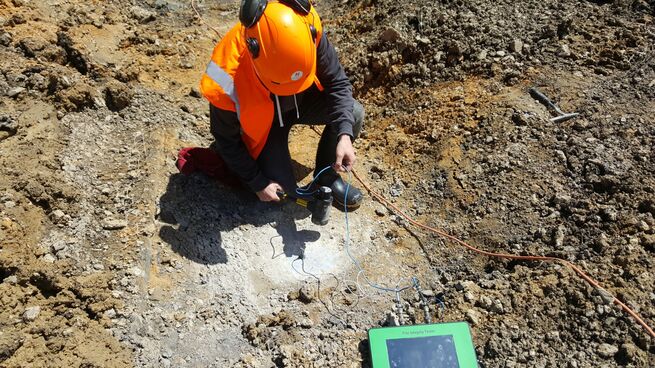Inspection Of Building
Posted by: Csiscan Nz, 04 Dec, 2020Ad Detail
- AD ID 662306
- Locality Auckland, Auckland
- Ad Type Offering
- Posted by Company
Concrete Structure Investigations Ltd are non-destructive inspection and detection specialists to consulting engineers, and the construction and civil industries nationwide.
Ultrasonic Testing
Ultrasonic is an acoustic NDT technology where sound waves are being emitted and their reflections are being received and interpreted. The emitted sound waves, get partially or fully reflected on phases between materials of varying impedance. The reflected waves arrive at different times and with different energy levels. These differences enable a trained and experienced expert to draw conclusions about the inner of a structure and its condition. Ultrasonic gives the opportunity for providing preliminary inspection results and full analysis and detailed documentation.
What are the Benefits of Ultrasonic Testing?
Ultrasonic testing is complimentary with other NDT technologies and delivers answers where other technologies don’t. It can be used as Quality Assurance measure, long term monitoring or for condition surveys. Access from only one side of the structure is necessary.
Non-destructive Testing
Non-destructive testing can be used to help engineers get a better understanding of key structural elements. A reliable structural condition assessment heavily relies on rigorous observations and collecting accurate data that can adequately describe the existing condition of the structure. In doing so, engineers are looking for signs of defects and distress in structural elements.
Why you may need it
Tests are carried out to ensure the selection and installation of adequate post-installed anchors in concrete and masonry. For Design: When you need to determine the capacity of an anchor for a particular loading. – ultimate For Quality Assurance: When you are establishing that an anchor has been correctly installed and has not been damaged – proof
How we do it
Ultimate
As the name suggests, ultimate tests are carried out until the ultimate strength of the fixing has been reached, and either non-elastic deformation or complete breakage has occurred. Ultimate shear and tensile tests are performed according to British Standard 8539:2012, Section B.2.3.2 – Tests for allowable resistance (statistical approach), using the procedure given in CFA Guidance note: Procedure for site testing construction fixings – 2012. A minimum of 5 shear and 5 tensile tests are performed at each location.
Proof
Proof tests are not performed to failure, but instead to a proof load, Np; a specific fraction of the rated loading. Proof tests are performed according to British Standard 8539:2012 Section 3.2 – Tests to validate the quality of installation – Proof tests. The number of fixings to be tested is dependent on the total number to be installed on the job. The standard specifies a minimum of 2.5% or at least 3 fixings per location. If the anchors hold the required load, without movement/deformation/damage to either the fixing anchors themselves or the base material into which they are loaded, they will have met the acceptance criteria. In the event of failure, the number of tests will be doubled within the discrete area of failure.
For More Info :- https://csiscan.nz/services/structural-health-monitoring/
https://csiscan.nz/
Email this Advertiser
Contact Detail
Auckland
- ➣Make the payment only after you receive the item.
- ➣Always meet the seller at a safe location.
- ➣Do not pay until you have verified the item.








 REPORT THIS AD
REPORT THIS AD